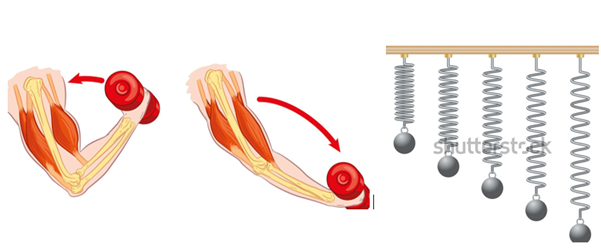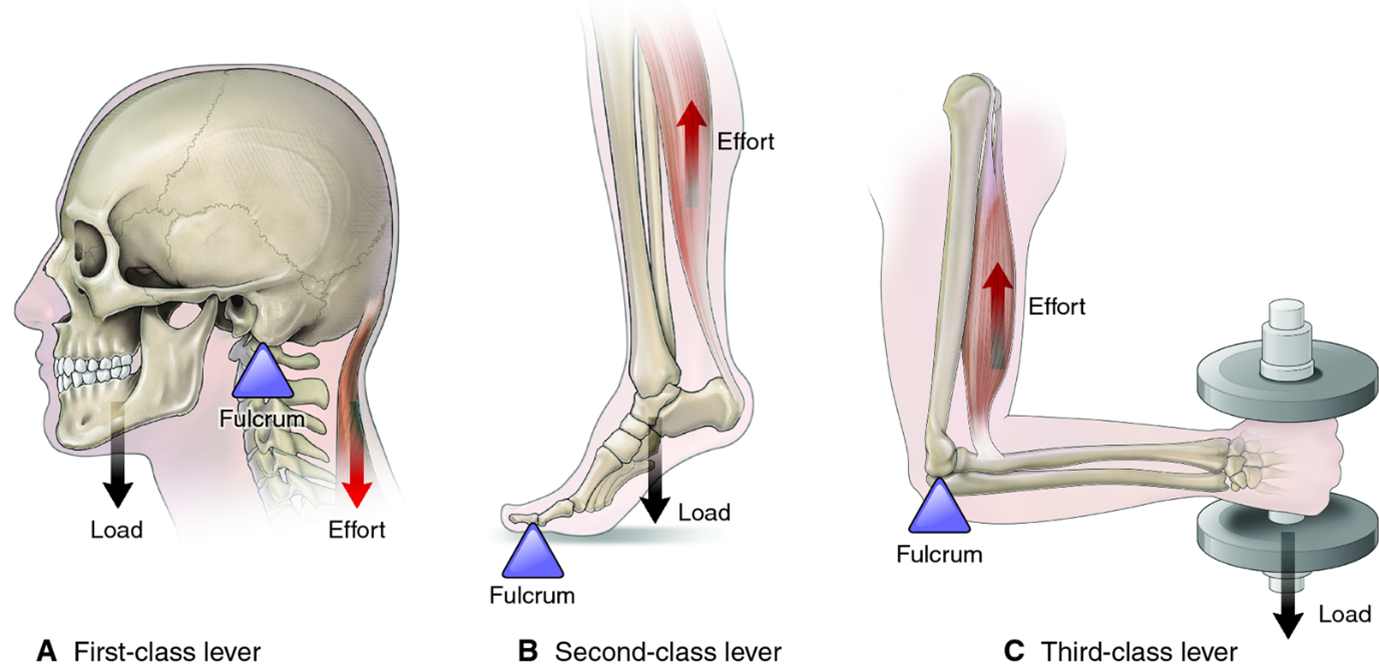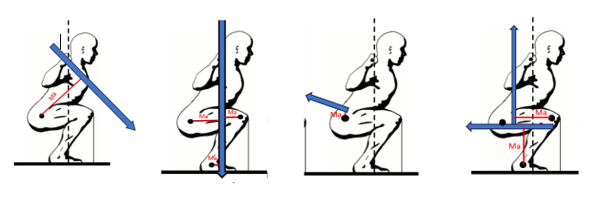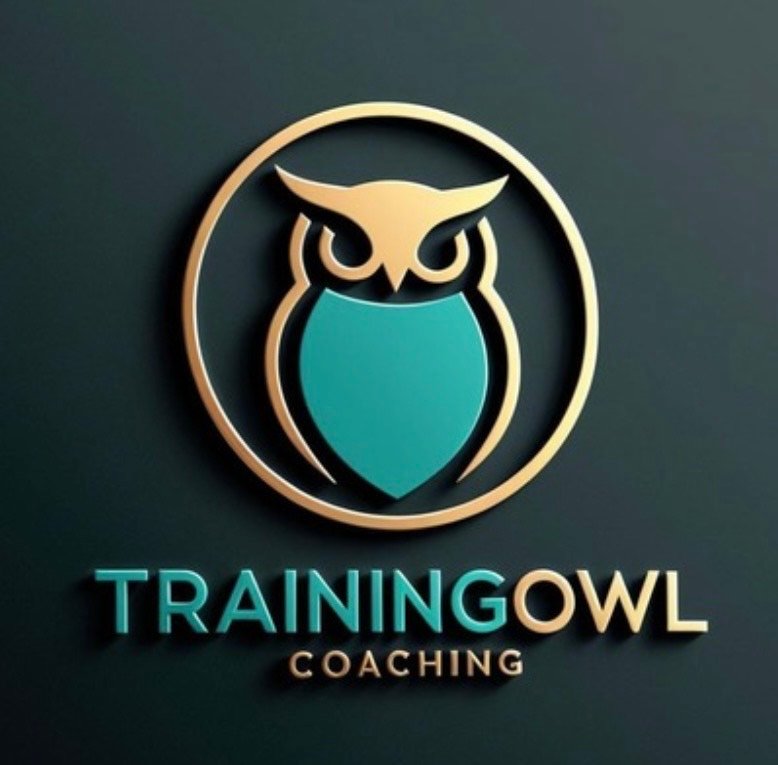How to efficiently use your proportions for squatting.
The movement our muscles produce can be imagined like the movement of an elastic band or a spring. They shorten actively, but can't prolong beyond resting length unless acted upon by an external force or antagonist muscle. In simpler words, they are only able to produce pulling force but they aren't able to push. Since muscles are connected to bones and bones are arranged as leverages one against another, when a muscle pulls on a bone the bone glides or rolls which results in the bone pushing, pulling or rotating an external object. This bone leverage system enables us to move our bodies against external objects and move external objects away or towards our body. The same mechanical principles that apply for leverages in physics apply for leverages within our bodies.

How our muscles contract
Levers in the Human Body
A lever is a body that has a fixed center of rotation (called a fulcrum) and when force is applied to the lever it rotates around that center. The farther the force is applied from the fulcrum the easier it is to rotate the lever — meaning less force is required. This distance between the force and fulcrum is called a moment arm.
There are 3 types of levers:
- TYPE 1: Fulcrum lays between resistance force and applied force.
- TYPE 2: Resistance and applied force act on the same side of the fulcrum with applied force acting through a moment arm longer than the resistance force acts.
- TYPE 3: Resistance and applied force act on the same side of the fulcrum with resistance force acting through a moment arm longer than the applied force acts.

The three types of levers.
The structure of the human skeleton is the same for everyone and therefore all of our joints create the same TYPE of levers, but the length of the moment arm varies from person to person and this significantly affects the ability to produce force as well as the distribution and magnitude of external forces that act on each individual's body.
Let's see how this translates to back squat.
The movement of a back squat involves flexing and then extending the ankles, knees and hips. The ratios of shins:femurs and torso:femur influence the amount of force the weight is creating on a person and how much of the person's muscle's force is getting transferred to the weight. Greater the sins:femurs ratio longer is the moment arm for quadriceps to rotate shins around ankles. This means less effort is needed to produce the force required to lift the weight. Greater the torso:femur ratio means a person needs less hip flexion to squat deep and since weight is positioned on the upper back, less hip flexion means shorter moment arm between the weight and hip joint, so the weight is producing less stress on the hip and back muscles. This upright position also decreases the moment arm for between the weight and an ankle which makes it easier for the quadriceps to move shins but it increases moment arm between the weight and the knees which makes it harder for quadriceps to rotate femurs around knees, while smaller torso:femur ratio forces greater hip flexion (forward lean) to squat deep, this increases the moment arm between weight and ankles but decreases moment arm between weight and knees – This is why we often see people with long femurs shifting their hips up when standing up from a squat since it is much easier for them to rotate femurs than shins. This forward lean also increases moment arm between weight and the hip increasing the strain on hip and back muscles.

Examples of resistance and effort force moment arms during a squat.
To sum up:
- If you have long shins and short femurs: The back squat is one of your favourite exercises and you're able to stand up in a controlled manner. If you also have a long torso you're the king of squats and everyone is jealous. High bar placement suits you since you can maintain an upright posture and if you're not competing in weightlifting or powerlifting you may even not need lifting shoes. If your torso is somewhat shorter you're still good at squats and a pair of lifting shoes or at least elevating the heels using a thin plate may help you become even better, also consider using a belt to make it easier for your back muscles to stabilize you.
- If you have short shins and long femurs: The back squat is harder for you. Your hips tend to shift up when standing up and you often get stuck in that “sticky“ middle from which you tend to fail. When that happens, the higher the bar is placed on your back, this “sticky” point becomes even “stickier”. If you are doing high bar squats, try lowering the bar a few centimeters. Also, lifting the heels or investing in lifting shoes may help you maintain a more upright posture which will reduce the strain on the ankles. If with these long femurs your torso is short, squats will probably be your worst enemy, and heel elevation is a must together with positioning the bar a bit lower on the back to reduce strain on hip muscles. If on the other hand your torso is long you may compensate slightly.
